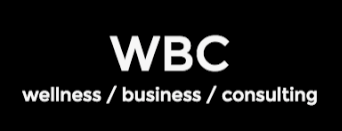I contributed to this article in Huffington Post via YEC:
Warming weather — and students out of school — mean more employees will be out seeking some down time in order to unwind with family and friends away from the office. As business slows, it offers a chance for company leaders to step away from the office for a little while and recharge. This is important, as going top speed all the time is detrimental to both health and success. Letting go, though, isn’t easy: It requires both preparation and delegation. Here are some ways entrepreneurs can ensure they can take that summer vacation.
A. Treat Your Company Like a Pet, not a Baby
Your company isn’t a baby, it’s more like a pet. You can leave it at home for a few hours. You can have someone else watch it for a week while you’re away. If you’re too precious with it and holding it too tightly, you’re not really able to take care of yourself and have time away, which is essential. - Rachel Beider, Massage Greenpoint, Massage Williamsburg
A. Delegate and Trust Your Team
Delegation is the name of the vacation game. Too many times owners simply don’t understand how important true delegation is, and instead they give their managers and staff very few responsibilities. Your team should be able to run the business in your absence; if you leave and the business falls apart, you’re failing as an owner. Delegate and trust your team, and take the break you deserve. - Blair Thomas, eMerchantBroker
A. Don’t Be Indispensable
No team member should be indispensable. Business experts talk about the bus factor or key person risk of a business: How many people would have to be hit by a bus for the business to be in trouble? Entrepreneurs should make sure their business’s bus factor is as high as possible. If there is redundancy for every role, taking a vacation shouldn’t be a problem. - Vik Patel, Future Hosting
A. Leverage Your Mental Prime Time
The key to taking a summer vacation as an entrepreneur is to be extremely productive with your work time. Identify when you are the most productive, and focus on the tasks that are the highest priority to complete during that time. To do so, eliminate distractions — such as calls and emails — and instead use the time you are at your mental best to accomplish your most important tasks. - Doug Bend, Bend Law Group, PC
A. Get Stuff Done Ahead of Time
Get as much work done as possible before your planned vacation. Assign out all of your responsibilities to specific employees. Let your vendors and other business contacts know that you’ll be away so they don’t think you’re ignoring them while you’re gone. Wrap up any loose ends right before you leave, and enjoy. - Andrew Schrage, Money Crashers Personal Finance
A. Put a Few Vacations on the Calendar
I always need to cancel a couple of vacations a year. During the summer, I’ll put a couple of weeks and a few long weekends on the calendar with the expectation that I’ll need to cancel one or more of them. Putting the dates on the calendar early gives me a much higher chance of success. Another tactic that works: Book an international flight! - Mitch Gordon, Go Overseas
Subscribe to The Morning Email
Wake up to the day's most important news.
A. Schedule Work and Launches Before or After Summer
Summer is really a good time to take a vacation for entrepreneurs because their audience may be less likely to be around during that time anyway. The fall, winter, and spring are ideal for product launches, promotions and other significant business activity. When you look at the year in quarters, you can easily carve out vacation time in the summer. - Zach Binder, Ranklab
A. Conduct a Trial Run
So you’ve built your business from the ground up, never taken a day off, and you’re unsure what will happen if you take a vacation. Work to set up procedures so your team knows how to handle everything without you. Work “on” your business, not “in” it. Then test it! Conduct a trial run by taking one or two days off, and let your team prove themselves. After that, progressively lengthen the time you’re gone. - Kyle Goguen, Pawstruck
A. Play the Role of Traffic Cop, but Don’t Create Work
I’ve tried to have vacations where I completely unplug, but I find that I’m stressed knowing that work is piling up. My new approach is to play traffic cop. I don’t “create work:” i.e., I won’t start a new project. But I stay connected and make sure to unblock the team. If they need me, I’m responsive. And if an outsider needs help, I direct them to the right employee. - Aaron Schwartz, Modify Watches
A. Turn Off Email Notifications
It’s important that when you’re taking a vacation that you really take one. If you instead spend most of your vacation time checking your emails and worried about the status of the business while you’re away, you’re not giving yourself the break that you need. Being better at your job depends on finding balance, so it’s important to make that balance possible. - Kelsey Meyer, Influence & Co.
A. Respect Your Boundaries
Internally respecting your own boundaries will help your clients and associates respect your boundaries too. Once you learn that a break gives you mental space and improves your productivity, you’ll give vacations a priority. No one can operate at a high level of productivity all the time. Recognize that breaks will only help, and make sure you have a clear plan for delegation. - Marcela De Vivo, Brilliance
A. Relax and Let Go
It’s more of a mental thing versus logistics. It’s letting go, realizing you need the break and that business will carry on without you. There’s always a will if you look hard enough. Most entrepreneurs believe it can’t go on without them, but really can for a week or even longer. Get over that belief and enjoy the time off. - Drew Hendricks, Buttercup






